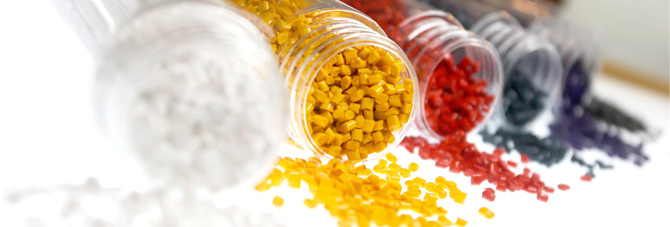| POLYPROPYLENE (PP) | ||||||||||||||||||||
|
Polypropylene is a plastic polymer with the chemical formula C3H6. It is used in many different settings, both in industry and in consumer goods, and it can be used both as a structural plastic and as a fiber.
Polypropylene's wide range of physical properties, low density and easy processing make it attractive for diverse applications in all markets.
|
| HIGH DENSITY POLYETHYLENE (HDPE) | ||||||||||||||||||||||||||||||||||||||||
|
A linear polymer, High Density Polyethylene (HDPE) is prepared from ethylene by a catalytic process. The absence of branching results in a more closely packed structure with a higher density and somewhat higher chemical resistance than LDPE. HDPE is also somewhat harder and more opaque and it can withstand rather higher temperatures (120° Celsius for short periods, 110° Celsius continuously). Benefits and Applications
|
| LDPE | ||||||||||||||||||||
Low Density Polyethylene (LDPE) is a colorless, non flammable, non reactive solid with no odor It is translucent to opaque, robust enough to be virtually unbreakable and at the same time quite flexible. Chemically LDPE is unreactive at room temperature although it is slowly attacked by strong oxidizing agents and some solvents will cause softening or swelling.
LDPE resin grades are branched polyethylenes, which provide easier processing, higher melt strength and superior optical properties compared with linear polyethylenes. The very-low-haze grades provide excellent optical properties. The branched structure of LDPE also makes it ideal to serve as the main resin component in shrink film structures.
|
| LLDPE | |||||||||||||||||||||||||||||||||||
Linear low-density polyethylene (LLDPE) is a substantially linear polymer (polyethylene), with significant numbers of short branches, commonly made by copolymerization of ethylene with longer-chain olefins. Linear low-density polyethylene differs structurally from conventional low-density polyethylene (LDPE) because of the absence of long chain branching. The linearity of LLDPE results from the different manufacturing processes of LLDPE and LDPE. In general, LLDPE is produced at lower temperatures and pressures by copolymerization of ethylene and such higher alpha-olefinsas butene, hexene, or octene. The copolymerization process produces an LLDPE polymer that has a narrower molecular weight distribution than conventional LDPE and in combination with the linear structure, significantly different rheological properties. Applications :
|
| EVA | ||||||||||||||||||||
|
Ethylene vinyl acetate (also known as EVA) is the copolymer of ethylene and vinyl acetate.
It is a polymer that approaches elastomeric materials in softness and flexibility, yet can be processed like other thermoplastics. The material has good clarity and gloss, barrier properties, low-temperature toughness, stress-crack resistance, hot-melt adhesive water proof properties, and resistance to UV radiation. EVA has little or no odor and is competitive with rubber and vinyl products in many electrical applications.
|
||||||||||||||||||||
|
| CPVC |
|
CPVC is an acronym for Chlorinated Polyvinyl Chloride. CPVC possesses the same outstanding chemical resistance of PVC, but offers superior performance to PVC in applications where higher heat resistance is required. |

